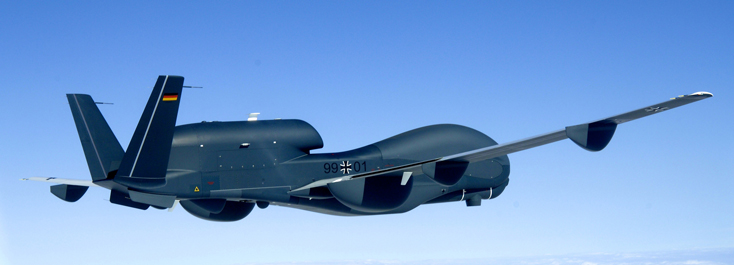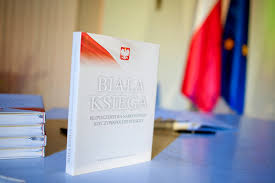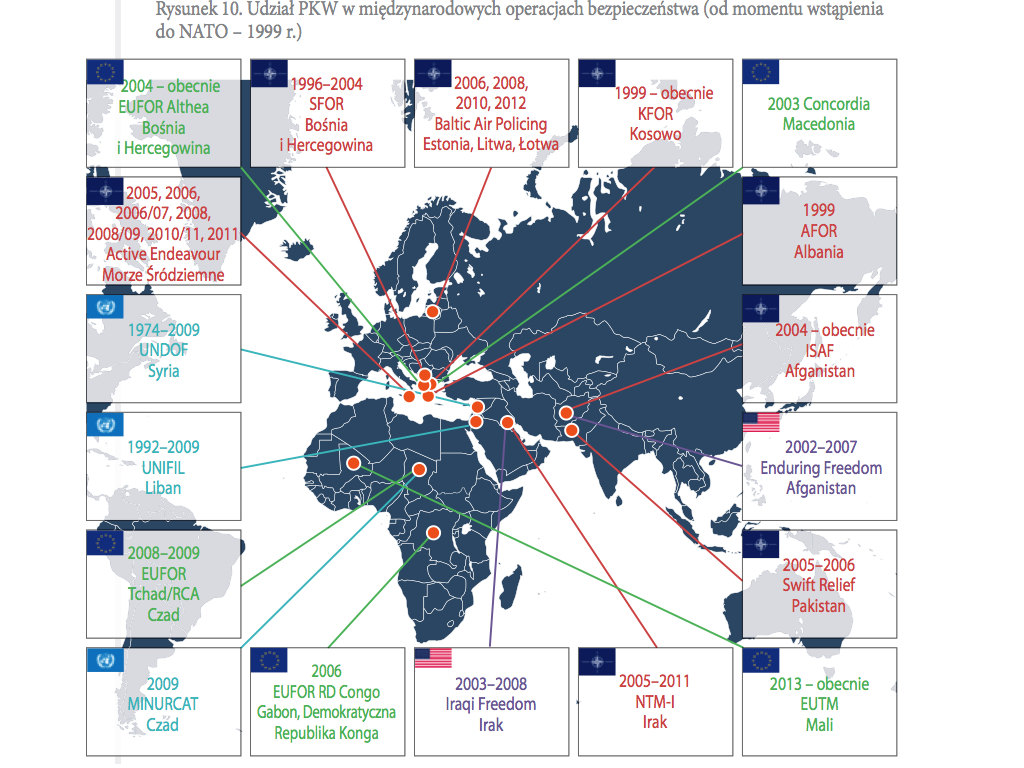This article is a part of The Hunt for Strategic September, a week of analysis on the relevance of strategic guidance to today’s maritime strategy(ies).
Sometimes you are forced by calendars and cycles to pop out a strategic document, or refresh a slightly stale loaf of intellectual effort.
Other times you can find yourself at a natural inflection point where it not only makes sense to re-evaluate your strategic requirements, but it is a necessity. Now is one of those times.
The bold-faced items which are screaming for attention are rather simple, but only on paper. They are actually exceptionally complex systems on their own, but they are shaping both our present and our immediate future.
1. The Long War is Over; Long Live the Long War. The American people, their elected representatives, and their nation’s allies have made it clear that after a dozen years of mostly low-intensity war, they want to trend back towards the mean. Nice thought, but the enemy gets a vote and we probably won’t be able to let the Olympics and World Cup be the place where nations, religions, and ideologies work out their differences.
That being said, the odds of over a hundred thousand American soldiers on the ground in some quasi-developing nation any time soon is small. Nation building in general will not be fashionable again for a generation. What we will need on very short notice with global reach is to find bad guys, break their stuff, and kill their people. We need to be ready to do that on our own – and have that robust capability for the foreseeable future and beyond. Long SOCOM, short NATO.
2. The Western Welfare State is Well Beyond its Design Limit.
 “It is an undeniable reality that in today’s network and information society people are both more assertive and more independent than in the past. This, combined with the need to reduce the budget deficit, means that the classical welfare state is slowly but surely evolving into a participation society. … Achieving a ‘prudent level of public debt’ … is and will remain crucial. … If the debt grows and the interest rate rises, these payments will put more and more pressure on our economic growth, on the affordability of public services and on people’s incomes. … Unless we do something the budget deficit will remain too high. The shift towards a participation society is especially visible in our systems of social security and long-term care. In these areas in particular, the classical post-war welfare state produced schemes that are unsustainable in their present form and which no longer meet people’s expectations.”
“It is an undeniable reality that in today’s network and information society people are both more assertive and more independent than in the past. This, combined with the need to reduce the budget deficit, means that the classical welfare state is slowly but surely evolving into a participation society. … Achieving a ‘prudent level of public debt’ … is and will remain crucial. … If the debt grows and the interest rate rises, these payments will put more and more pressure on our economic growth, on the affordability of public services and on people’s incomes. … Unless we do something the budget deficit will remain too high. The shift towards a participation society is especially visible in our systems of social security and long-term care. In these areas in particular, the classical post-war welfare state produced schemes that are unsustainable in their present form and which no longer meet people’s expectations.”
– Willem-Alexander, King of The Netherlands, speech from the Throne, 17 September 2013.
Our traditional European allies and Japan are either creaking under the weight of unsustainable budget obligations, national debt, are too small, or have decreased military spending to the point of irrelevancy outside of auxiliary status as part of a larger nation or coalition action. Some combine all of the balance above; the United States is batting .500.
Until the Western economic model morphs in to what comes next and debt loads return to sustainable levels – at least a generation to fix – the last 100 years’ assumptions about the ability of nations at general peace to have armies sustainable in the field for any length of time are no longer valid.
3. Demographics, Resources, & Striving to Catch Up. In line with the changing reality of #2, populations in Europe and East Asia will begin to collapse along the Russian model in the coming decades. Folded in are the asymmetric demographics of ethnic/religions minorities within the European nations and Russia. When non-assimilated ethnic/religions minorities have roughly twice as many children as the legacy/host ethic/religions culture, history shows this leads to conflict. History belongs to those who show up, and numbers matter. One cannot expect to rely on “Cooperative Strategies” and “Global Fleets” when those nations that should be aligned with you cannot effectively deploy and have their largest security concerns internal to their borders.
In places such as Egypt, Yemen, and sub-Saharan Africa, population growth will continue to strip away per-capita improvements that should result from economic growth. Those nations, especially in a global information environment, will not be able to supply their people a sufficient standard of living, much less give them an opportunity to get close to the lifestyle they see every day via media.
As a result, migration challenges that we see on Europe’s Mediterranean coastline, eastern Siberia, and Western Australia will continue and expand to other areas. The target nations will have enough difficulty taking care of the hangover from the Welfare State and already existing unassimilated and growing minority populations to ignore this challenge. To add stress to the global system, they will soon become even more restrictive toward economic- and even conflict-driven migration.
To meet these three global drivers, what our nation needs in 2014 is a blank-paper, baseline review of the fundamentals; an existential strategic assessment of what our nation needs, what it wants, and what is aspires to be. It then needs to see what kind of military it can afford to meet somewhere on the line from need-want-aspire. What risks are worth taking? What requirements are non-negotiable?
Will we get such a strategic level review that we need from The Strategic Choices Management Review (SCMR)? Hard to say.
What direction and guidance will or did come from the political level to drive that strategic review? We simply don’t know. There is another 3-legged stool that I would offer for any such review that can guide those pondering once the political guidance is received, or any follow-on studies or policy documents are finished.
1. Know your place. This is at the strategic level. Most people are more comfortable slipping in to what they know best, the tactical or operational. Back away, think in broad strokes. If you have C2, C4ISR, or pictures of some Joint/Combined vignette in your document, you’re doing it wrong.
2. Embrace uncertainty. We have no idea what will be the greatest threat to our nation at the strategic level. We can have short lists. We can have most likely and most dangerous, but we cannot give anyone 51% certainty that we know where the next punch is coming. As a matter of fact, if someone in the room says they can tell you – assume they are wrong until other information backs them up. Uncertainty requires flexibility both intellectually and materially. Keep that at the top of your notepad. In an uncertain world, excessive speciality always leads to extinction.
3. Advertise your ignorance. It is OK to say, we have no idea. It is OK to say it is anyone’s guess. What needs to be done is to assess and mitigate risk. Be brutal with your assumptions and even if you are comfortable, have an answer if one of them is wrong. If your answer requires pixie dust, you’re doing it wrong.
When thinking about strategy, the maritime wedge has two reference points most think of; there is “The Maritime Strategy” from 1986, and the 2007 “A Cooperative Strategy for 21st Century Seapower.” Both were products of their time, and in 2013, as templates, both should be thrown aside. Like I said, blank paper.
 Who should be writing our next national defense strategy? If we built our team as usual, we will get simply a conventional wisdom, jargon-filled, programmatic-defending, and buzzword-filled work that will be quoted a lot, read less, and almost never fully understood.
Who should be writing our next national defense strategy? If we built our team as usual, we will get simply a conventional wisdom, jargon-filled, programmatic-defending, and buzzword-filled work that will be quoted a lot, read less, and almost never fully understood.
If we looked around the table (virtual or actual) at the first meeting of those who will have a major say in the document and half the people are over 50, we are not starting right. If at least 20% of the people are not under 30, we are not starting right. If more than half were STEM graduates at the undergrad level, we are not starting right. If the majority were known as team players and “company men,” then we are not doing it right.
Odds are however, that the group writing our strategy will be mostly over 50, spent most of the last decade and a half within commuting distance of The Pentagon, are from technical backgrounds, and are recidivist staff weenies of one kind or another. They also will be given way too much time to complete their study.
 What I am interested in is if there will be a “Minority Report” of any kind. The group’s evil twin Skippy – their other-universe Spock sporting a goatee and looking askance at all that seems slightly off. Will there be a COA-A and a COA-B for public debate?
What I am interested in is if there will be a “Minority Report” of any kind. The group’s evil twin Skippy – their other-universe Spock sporting a goatee and looking askance at all that seems slightly off. Will there be a COA-A and a COA-B for public debate?
I don’t think so, but we should. This is how I would do it.
What if we formed a fast and loose second group to offer their view of what our strategy should be? One where 75% were under 50? 50% under 35? Get a grumpy, terminal 06 with a liberal arts PhD to round up a gaggle of iconoclasts. You know the types; those who gave the middle finger to their community-fill and pursued a resident PhD program or quirky fellowship. The ones who caused their bosses to get “the call” late one afternoon because one of their officers decided to write something for publication with a message way off the reservation. The historian. The fiction writer. One of the sociologists who was on a human terrain team in AFG.
 Keep the group relatively small compared to the “official” group. Most important, have it work outside FL, CA, WA, HI, VA, and MD. Better yet, ship them off to an ICBM command silo in South Dakota. Give them a little “The Shining” vibe to their deliberations.
Keep the group relatively small compared to the “official” group. Most important, have it work outside FL, CA, WA, HI, VA, and MD. Better yet, ship them off to an ICBM command silo in South Dakota. Give them a little “The Shining” vibe to their deliberations.
Give them a charter such that “Point 1” is that under no circumstances will they contact anyone in the official group. “Point 2” should be that within 3 hours of their first meeting, they have to select their Chairman. The person who formed the group not only cannot be the Chairman, he cannot be involved in any of the deliberations as a member either. Yes, no one will appoint the Chair, the members will vote on him. They will also set their own rules of order. They have 2 hours to do that.
As South Dakota has terrible per diem and people have other lives to live, another advantage would be that they would be motivated to get their work done quickly and in a digestible format.
Their report will not be chopped by anyone, and all members must sign the final document. Each member, if they wish, will be allowed a 1-page 10-pt font opportunity to outline any additions to or deletions from the report they would prefer. Consider it a Minority Report nested inside a Minority Report.
As their report would most likely be completed before we see the official report, it would be embargoed and in possession of the Chair until the day the official report is made public record. Heck, the way things are going, we probably still have time until the SCMR report comes out.
Their broader charter is not to pick the most outlandish or radical strategy, or to be avant-garde for the sake of being avant-garde – but to offer what they see as the best strategy.
If their results are close to the official report, then all the better – we may be close to where we need to be. If not, well even better – creative friction!
Would such a process potentially undermine the official strategic document? Perhaps, but so what? The purpose is to promote debate about the direction we need to take as a nation – not predict the future. It only becomes a negative if we let it. As no one knows the future, what harm would there be to an addendum to the strategic document titled, “An Alternative View?”
None. What good will it do? Tremendous good in encouraging a broad range of thinking about what our nation is, what it should be, how we should go about pursuing that aspiration, and how we should man, train, and equip its armed forces to support that pursuit.
Well, that is the theory, and we are talking about something soaked in DC … so … yea.





